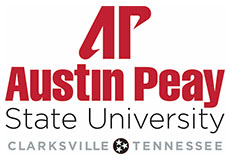 Clarksville, TN – Research projects can be lengthy and time-consuming processes. Still, even by those standards, Austin Peay State University (APSU) assistant professor Dr. Katie Haase’s most recent undertaking will be a longstanding commitment.
Clarksville, TN – Research projects can be lengthy and time-consuming processes. Still, even by those standards, Austin Peay State University (APSU) assistant professor Dr. Katie Haase’s most recent undertaking will be a longstanding commitment.
Last week, Haase received word that her Intergovernmental Service Agreement (IGSA) contract with the United States had been granted – for 10 years and over $2 million in funding.
“Having 10 years is pretty spectacular,” said Haase, who works in the APSU Department of Biology. “That length of time is not that common, and having it right here at Fort Campbell is incredible. In my career, I’ve often had to travel, camp, live in a hotel or a field house or even live out of a truck for extended periods of time when I was out at a site; now, my students can have a field site 20 minutes from home [and] can work throughout the semester even if they’re in class. It’s pretty rare to have that available to us.”
This contract isn’t an extension per se of the three-year IGSA she received in 2020 that ended in June of this year, but rather a new contract that builds off the research Haase and her students conducted on Northern long-eared bats, doing acoustic surveying and mist netting—which involves catching, tagging and tracking bats.
While the Northern long-eared species was largely not present – Haase was unsurprised, recalling only one instance where they were even able to survey a Northern long-eared during the project acoustically—she and her students were also able to focus on other declining species in the area. This research, which consisted of the tricolored and little brown bats, among other species, was conducted to help determine if these species should be listed on the Endangered Species Act. The tricolored is currently going through the legal process for inclusion.
 Through the research, Haase and her cohort determined that Fort Campbell has the highest population of this species in the area and were able to expand the known data on tricolored bats at the state and federal levels. These findings led Gene Zirkle, a supporter of Haase’s work and branch chief for the Directorate of Public Works in the Environmental Division at Fort Campbell (affectionately known as Batman on post for his work with bats), to encourage Haase to seek an extension for more surveying and to expand out to more species in the area.
Through the research, Haase and her cohort determined that Fort Campbell has the highest population of this species in the area and were able to expand the known data on tricolored bats at the state and federal levels. These findings led Gene Zirkle, a supporter of Haase’s work and branch chief for the Directorate of Public Works in the Environmental Division at Fort Campbell (affectionately known as Batman on post for his work with bats), to encourage Haase to seek an extension for more surveying and to expand out to more species in the area.
Expanding the research is part of what necessitated the new contract rather than a renewal of the previous grant. It will allow Haase to provide opportunities and support for undergraduate and graduate students for the next decade, a pivotal step in the continued growth and development of Austin Peay’s biology department.
“It’s expensive to do some of this work,” Haase said. “We have to have funding, and funding can be limited, and a lot of it goes toward equipment and supporting graduate students. With this contract, I can offer graduate students more support and pay undergraduate students who might otherwise miss out on research opportunities because they have to work part-time, giving them a chance to work and be paid in their field. I can supplement the stipend we pay graduate students, be competitive with labs that have a lot more money, and keep attracting great graduate students to Austin Peay State University.”
Haase gave credit to her current graduate students—Leah Crowley, Brandon Gulley, Ryan Stuart and Dakota Van Parys, and undergraduate students Kennedy Beck (’22) and Logan Young —for going out and doing much of the day-to-day in the field to collect research and data points.
“It’s really driven by the students,” Haase said. “It’s a lot of work, and they do the work and analyses and writing, and I just help them along.”

Over the life of the latest IGSA, Haase wants to expand on the work she and her students have already begun, fine-tuning what they know about the bats they’re studying and delving further into what attracts them to these areas and the trees they’ve migrated toward.
In addition, Haase hopes to be able to study the effects of habitat, foraging behaviors, land management, and disease, including white-nose syndrome—a devastating disease caused by a fungus with astronomically high mortality rates in certain species.
Not only does the latest contract help make this possible for Haase and her current lab students, but it should also generate enough funding to support two to three graduate students annually. Altogether, it secures a significant round of funding for Haase and will elevate Austin Peay State University’s profile for biology graduate and undergraduate research students while strengthening Austin Peay’s partnership with Fort Campbell.Count them all up, that’s a … win, win, win, win, win, win, win?
That’s a lot of wins for Austin Peay State University from this grant.
“We have so much support at Austin Peay from everyone, from the president [Dr. Mike Licari], the dean [Dr. Karen Meisch], the chair [Dr. Amy Thompson],” Haase said. “It’s the faculty in a program that ultimately make the program [successful] and provides the opportunities for students to really mold them into who they’ll be professionally. Knowing we’ve secured that funding for 10 years and will be able to support those students is really nice.”



